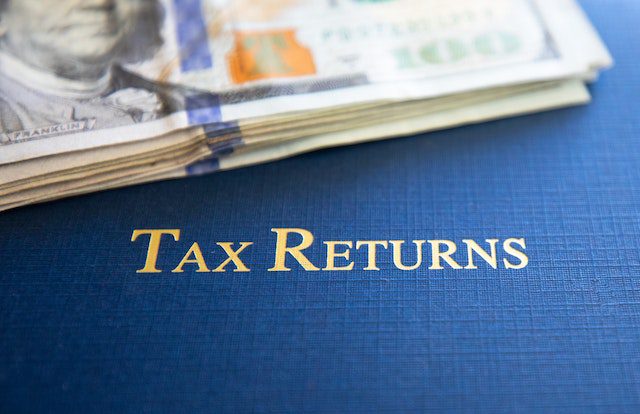Millions of Retirement Savers Are Losing Some of Their Tax Breaks: 401(k) Catch-Up Contributions
Retirement is a journey that millions of Americans prepare for, with the 401(k) retirement savings plan acting as their vessel. For years, those aged 50 and older have enjoyed the capacity to bolster their retirement reserves through additional “catch-up” contributions, a provision offering substantial tax advantages. This allowance, a beacon of financial relief for high earners, is poised to alter its course next year, leaving some savers to navigate uncharted waters.
Changes on the Horizon: After-tax Retirement Catch-up Contribution Amounts
Under current IRS provisions, eligible workers aged 50 and above can contribute an additional $7,500 to their 401(k) accounts, bringing their total yearly contribution up to $30,000. However, as the calendar flips to the next year, a wave of new rules passed by Congress threatens to reshape this popular deduction for those who earn more than $145,000 annually. These high earners will find their additional catch-up contributions diverted exclusively into after-tax Roth accounts.
According to the Vanguard Group, 16% of eligible participants opted to take advantage of these additional contributions in 2022. With these impending changes, many workers will face paying taxes on their catch-up contributions up front during their peak earning years, rather than during their retirement, which could potentially be in a lower tax bracket. This shift not only adjusts how many Americans save for retirement but also redefines financial and estate-planning strategies.
The Past, the Present, and the Future: Define Age, Max Limits, and 2023 Rules
The ability to make catch-up contributions with pretax money has been a significant boon for high earners. To illustrate, a contributor in a 35% tax bracket would receive a $2,625 tax deduction for a $7,500 catch-up contribution. On the other hand, someone in the 22% tax bracket would deduct $1,650. This forthcoming redirection of catch-up contributions to Roth accounts is expected to increase the tax liability for many contributors under the new rules.
Although this change may cause an initial tax sting, financial advisors highlight the potential benefit of funneling more funds into Roth accounts. Here, money not only grows but can also be withdrawn tax-free in retirement. The imminent adjustments, however, don’t extend to Individual Retirement Accounts (IRAs), which permit a catch-up contribution of $1,000 on top of the $6,500 annual limit in 2023 for those aged 50 and older.
Roth vs. Traditional IRA Accounts: The Tax Implication
When it comes to taxes on withdrawals, traditional accounts and Roth accounts stand on opposite shores. Retirees with savings in traditional accounts face ordinary income tax upon withdrawal. In contrast, Roth accounts allow workers to build a reservoir of tax-free funds. These can be particularly handy during years where drawing from other accounts might push them into a higher tax bracket or incur increased Medicare premiums.
While it’s a common belief that retirees will find themselves in a lower tax bracket, this is not always the case. High earners who have amassed considerable sums in their traditional 401(k)s and IRAs often find themselves in the same or even a higher tax bracket when the IRS mandates withdrawals from these accounts starting at age 73.
In this scenario, Roth accounts shine as they grow tax-free, making them a more desirable option for high savers than taxable brokerage accounts. The annual taxation of dividends, interest, and realized capital gains in taxable brokerage accounts can eat into your savings. Furthermore, Roths can offer significant benefits for heirs, who can enjoy tax-free income.
Delay Pleas from Companies
As the new rule’s effective date of January 1 looms, many companies and plan providers express their need for more time to meet the logistical challenges posed by this change. Identifying employees who earned more than $145,000 the previous year and adjusting payroll systems to ensure that their catch-up contributions go into a Roth account is no small task.
Recently, over 200 employers, 401(k) record-keepers, and payroll providers sent a letter to Congress requesting a two-year delay. With heavyweights like Delta Air Lines, Anheuser-Busch, and Fidelity Investments among the signatories, they argue that the time frame is too tight to adapt their systems to the new requirements.
In the face of uncertainty, these stakeholders await regulatory guidance on questions such as whether they need to obtain consent from high earners to divert their catch-up contributions to a Roth account, or if they can proceed automatically.
A Rescue Plan from Congress?
A drafting error in the retirement bill passed by Congress last year casts a shadow over the future of catch-up contributions. As per the interpretation of many lawyers specializing in retirement plans, the error seems to prohibit catch-up contributions for all workers beginning in 2024. However, in a letter sent to the Treasury Department and IRS, lawmakers stated that they plan to introduce a technical corrections legislation to rectify the problem, affirming that Congress had no intention of disallowing catch-up contributions.
Conclusion
As we sail into the future of retirement savings, it’s important to keep a vigilant eye on the horizon. These changes to 401(k) catch-up contributions represent a significant shift for high earners. While it may take some time to adjust to these new currents, understanding the implications and being prepared to adapt will be critical to charting a successful course towards your retirement.
Call The Tax Defenders today for a FREE tax attorney consultation on you tax issues, including tax debts, unfiled returns, payment plans, offers in compromise, levies, and wage garnishments. 312-345-5440. Call TODAY!
Related questions
What is the 2023 401k contribution and catchup?
In your quest to understand the 2023 401(k) contribution limits and catch-up provisions, it’s important to note that contributions to other retirement accounts, such as IRAs, are independent and do not impact your 401(k) limits. For the year 2023, the standard employee 401(k) contribution limit has been set at $22,500. However, if you’re aged 50 or over, you’re granted the opportunity to contribute an additional $7,500 as a ‘catch-up’ contribution. This means that if you’re within this age group, your total potential 401(k) contribution for 2023 could reach up to $30,000, reinforcing your retirement nest egg.
Are 401k catch-up contributions worth it?
Evaluating the worthiness of 401(k) catch-up contributions often leads to the question, “Are these extra contributions truly beneficial?” For individuals aged 50 or above, the answer is a resounding yes. As of 2023, you’re eligible to contribute an additional $7,500 per year to your 401(k), bolstering your retirement savings considerably. This increased contribution not only provides immediate tax benefits, but also amplifies the growth of your portfolio over time. The end result? A substantially larger nest egg by the time you transition into retirement, illustrating the substantial value of catch-up contributions for securing a financially comfortable retirement.
What are the rules for 401k catch-up contributions?
When exploring the regulations surrounding 401(k) catch-up contributions, it’s crucial to note that these provisions primarily benefit individuals who are aged 50 or above by the close of the calendar year. In 2023, these individuals are permitted to make an additional annual catch-up contribution of up to $7,500, which is a substantial increase from $6,500 in 2021-2022 and $6,000 from 2015 – 2019. The 401(k) plans that typically allow for these catch-up contributions, with the notable exception being the SIMPLE 401(k), thereby provide an invaluable opportunity for older employees to substantially enhance their retirement savings.
What are the new 401k limits for catch-up?
Keeping abreast with the changing limits for 401(k) catch-up contributions is vital for strategic retirement planning. For the year 2023, the limit has been escalated to an impressive $73,500, which includes standard and catch-up contributions. This demonstrates a significant increase from the previous limits of $67,500 in 2022, $64,500 in 2021, and $63,500 in 2020. This progressive increment in the contribution limits illustrates a committed approach to encouraging stronger retirement savings, especially for those nearing the retirement age.
What is the maximum 401k contribution for 2022?
When planning for your financial future, it’s key to know the maximum 401(k) contribution limits. In 2022, the IRS set the maximum employee contribution limit for both Roth 401(k) and traditional 401(k) accounts at $20,500. These limits, set by the IRS, regulate the maximum amount you and your employer can jointly contribute to your 401(k) each year. Keep in mind that in 2023, this cap sees a significant increase, moving up to $22,500, further empowering individuals to bolster their retirement savings.







